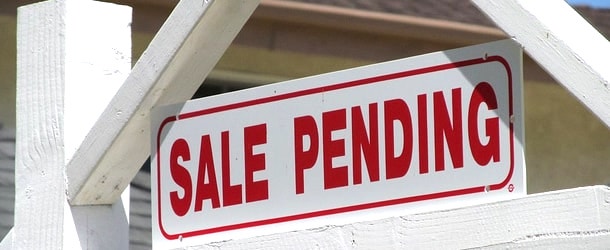While mortgage rates are projected to be slightly higher next year, home purchase activity should hit a new record high, per the latest forecast from the Mortgage Bankers Association (MBA).
The group said it expects purchase loan origination volume to increase a further 8.5% to a record high $1.54 trillion in 2021.
That $1.54 trillion would better the previous all-time high of $1.51 trillion in purchase loan volume set back in 2005, just a year or so before the housing bubble burst.
Interestingly, they’re forecasting an even better 2022, with purchase volume of $1.57 trillion.
Similar to 2005, 2022 could be one of the last big years in the housing market before things take a turn, though there’s no guarantee of history repeating itself.
It’s just that it sounds awfully familiar…
Higher Mortgage Rates in 2021?
- The MBA is once again calling for higher mortgage rates next year
- They expect the popular 30-year fixed to rise from 3.00% to 3.30% in 2021
- Then they see rates rising to 3.6% in 2022 and 3.9% in 2023
- I’m not convinced mortgage rates will rise next year – they could in fact fall further
And now for the bad news, at least for mortgage lenders. The MBA sees mortgage refinance originations plummeting 46.3% to $946 billion next year.
Of course, that’s not horrible, it’s just that 2020 has been so good for the refinance market that it’ll be tough to follow it up with anything close.
This comes after a massive 70.9% rise in refinance activity in 2020, fueled by record low mortgage rates and the desire for more space.
Many mortgage lenders have announced record volumes, including Quicken Mortgage and United Wholesale Mortgage, just to name the top two.
But with mortgage rates expected to rise slightly in 2021, it’ll become more difficult to find new refinance candidates who stand to benefit.
The MBA’s baseline forecast for 2021 mortgage rates is a 30-year fixed at 3.30%, up from 3.00% to end 2020.
While it’s a modest increase to be sure, it would obviously dampen refinance activity, though clearly do little to slow down home purchases.
The MBA expects total refinance volume of $1.75 trillion this year, up from just over $1 trillion last year.
It is then expected to fall below a trillion before nearly halving to $573 billion in 2022 and then $520 billion in 2023.
Personally, I think that’s a bit pessimistic since you have to expect a flood of cash out refinances at some point in the near future, especially if home prices keep surging higher.
That will result in higher loan balances thanks to increased home equity and the ability to tap more of it.
There’s also no guarantee mortgage rates will actually rise in 2021. The MBA, along with all the other big mortgage groups, have consistently been wrong in their annual forecasts.
So why should we expect mortgage rates to rise in 2021?
As I pointed out in a recent post, mortgage rates often move lower when a challenger and/or a Democrat wins the election, and Biden is currently leading in the polls.
Even if Trump wins, there’s a good chance mortgage rates could move lower based on historical data.
Simply put, I’m skeptical of higher mortgage rates next year, despite them already being at/near record lows.
Additionally, I expect mortgage lenders to loosen underwriting requirements if there is any sizable fall in loan volume to avoid any sort of slowdown.
That, along with an increase in cash out refis, would likely be enough to keep refinance volume higher for the foreseeable future.
The MBA is forecasting a total of $3.18 trillion in home loan volume for 2020, the highest since 2003 ($3.81 trillion).
Next year, total mortgage origination volume is predicted to fall to roughly $2.5 trillion, which would still be the 2nd highest amount in the past 15 years.

